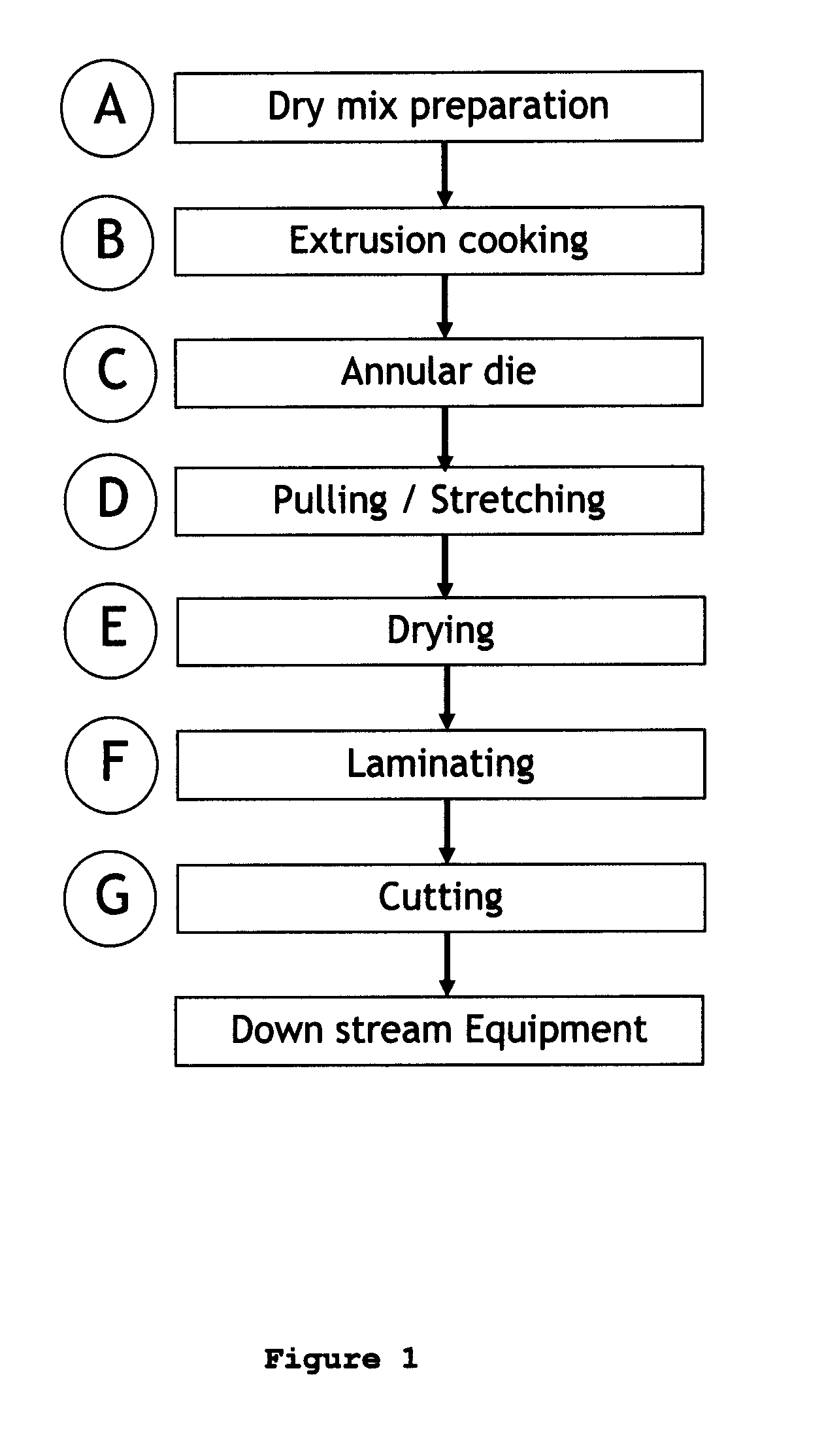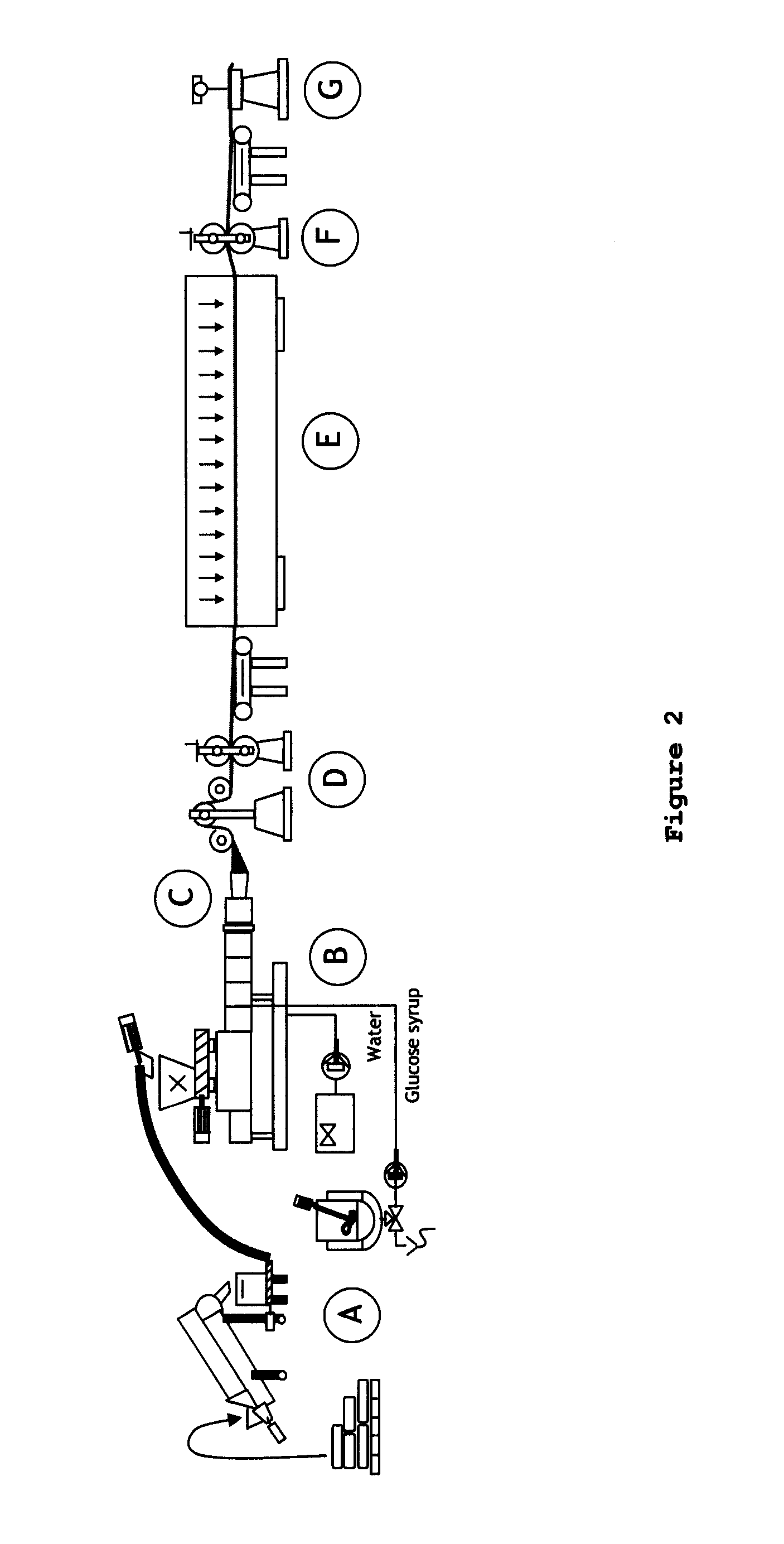Production of edible wafers by extrusion
a technology of extrusion and edible wafers, which is applied in the direction of milk preservation, manufacturing tools, baking products, etc., can solve the problems of inhomogeneous distribution of cereal-based products, inability to use extrusion to produce uniform large flat wafer sheets, and common extrusion processes
- Summary
- Abstract
- Description
- Claims
- Application Information
AI Technical Summary
Benefits of technology
Problems solved by technology
Method used
Image
Examples
examples
Extrusion Process
[0087]A dry mix (moisture around 10%) is placed in an extruder. It enters into an Archimedean screw or double screws which are surrounded by thermostated jackets (barrels), and water is injected at a relative low feed rate (total moisture into the machine is usually between 15-25%). Other ingredients such as fat, sugar solution water and / or steam may also be injected. The material starts to melt due to the combination of mechanical friction between the screw(s) and raw material within the screw and thermal energy given through the barrel. The melt is conveyed towards the die where it is put under pressure. Typical conditions are 130-170° C., 8-15 MPa and mean residence time around 30 seconds. The product passes through the die where it can be shaped.
Composition
[0088]A typical composition of the invention is given in the table below.
PUM
| Property | Measurement | Unit |
|---|---|---|
| water content | aaaaa | aaaaa |
| width | aaaaa | aaaaa |
| thickness | aaaaa | aaaaa |
Abstract
Description
Claims
Application Information
 Login to View More
Login to View More - R&D
- Intellectual Property
- Life Sciences
- Materials
- Tech Scout
- Unparalleled Data Quality
- Higher Quality Content
- 60% Fewer Hallucinations
Browse by: Latest US Patents, China's latest patents, Technical Efficacy Thesaurus, Application Domain, Technology Topic, Popular Technical Reports.
© 2025 PatSnap. All rights reserved.Legal|Privacy policy|Modern Slavery Act Transparency Statement|Sitemap|About US| Contact US: help@patsnap.com



